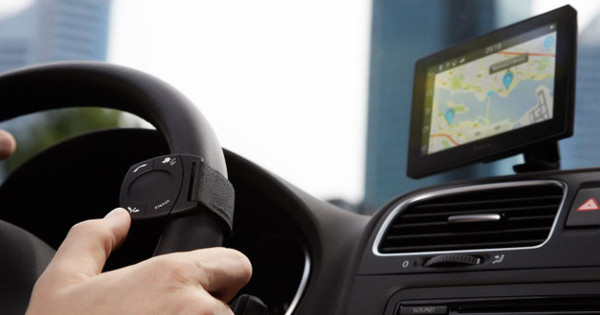Most people know VLC media player because it is an omnivore. The program plays all movie files that occur in practice. Less well known are the advanced features of VLC and that is exactly what we focus on in this article, because you can do a lot more with it!
Basically, VLC is of course a playback program and you should continue to use it for that. The options we discuss in this article are a nice touch. Not all tricks are useful for everyone. Use it what you like. Try out the tricks, then you will immediately notice how powerful VLC actually is and how little you use it. We are not going to tweak VLC extensively, so the basic functionality as you already use VLC will be preserved. To get started with this masterclass you need VLC and that program can be found here. We use VLC's Dutch language option in this article. Maybe your VLC is in English? Then switch (temporarily or otherwise) to the Dutch language to be able to follow the steps better. Go to Tools / Preferences and adjust the language to Menu language.
Tip 1 - Default Player
VLC plays everything related to video files without any problem. However, it can happen that for certain files another program starts as soon as you double click on a video file. Well-known programs that claim this right are Windows Media Player and iTunes. In that case, you can reset VLC to be used when you double-click a video file. Go to the Windows control panel and go to Programs / Default programs / Set default programs. Search the list for VLC media player and select it by clicking on it. Confirm with Set this program as the default program.

Don't want VLC as your default player? Then you can still play your video files with VLC. Launch VLC and drag and drop the video file you want to play into the VLC window. Of course you can also use the menu Open Media / File to use.
Tip 2 - Subtitles
Subtitles and movies are inextricably linked, but technically, the components are usually separate. If you're playing an mkv video file, the subtitles may be 'baked in'. This also applies to DVDs that you play with VLC. Watch during playback at Subtitle / Subtitle track. Sometimes you see an indication of the language here, but it can also contain Track 1, Track 2 and so on. In that case it is a matter of trying to find the right language.

Tip 3 - External Subtitles
Usually the subtitle of a movie is a separate file. An srt file is a popular format. The srt file with the subtitles is supposed to be in the same folder as your movie file. The file with subtitles from the movie sharks2015.avi must therefore be named sharks2015.srt. Only then will VLC automatically recognize and display it while playing your movie. Is the subtitle file called sharks2015NL.srt? Then you can rename this file before playing the movie or add the file manually while playing the movie. The latter goes through Subtitles / Add Subtitle File.

Tip 4 - Search subtitles
There are many websites where you can download subtitles. After doing a search you usually get a zip file that you can download and extract. Here you will find the file with subtitles. You just need to manually rename it to match the movie file, or add the subtitle file manually. With a little luck it will work.
Does this method sound cumbersome? It is! Thanks to the vlsub extension you can use View / Download subtitles Search and download subtitles directly on the Internet. Vlsub is now standard in VLC. You can set the language (Dutch) and have it search automatically or give a manual search. The subtitles are immediately saved with the correct file name and automatically selected as active subtitles of the currently playing movie.
Subtitle Synchronization
If you notice that your subtitles are out of sync, it's best to look for new subtitles. This is the shortest route and saves annoyance. In most cases, new files can be found via popular subtitle websites, the built-in subtitle search in VLC or with a special program like Sublight. If this doesn't help, VLC has the option to re-sync the subtitles. To do this, use the H and G keys and play with them until the text is aligned with the image again.

Tip 5 - Play Rar and Zip Files
Many movies on the internet are packed in a zip or rar archive. A movie can contain many dozens of such archive files. Normally you need to extract the files after downloading before you can view the movie file, but for VLC you don't have to. Drag a zip or rar file containing a movie file to the VLC window to watch your movie instantly. You can also open the archive file via Open Media / File. This not only saves an extra action and a lot of time, but also disk space because you have to deal with the movie file and the archive file. The downside of this feature is that it sometimes doesn't work for some inexplicable reason, but it's always worth a try!

Tip 6 - YouTube videos
VLC doesn't really care whether a video file is on your computer, USB stick or somewhere on the internet. You can even play YouTube videos with it. First, open the YouTube video in your browser and copy the link from the web address. Now launch VLC and click Media / Network Stream to open. Now paste the web link to the video on YouTube and click Play.
Tip 7 - Save from YouTube
Most people who want to save something from YouTube on the computer turn to Freemake or other free programs. We take integrated advertising networks and sometimes even spyware for granted with this kind of software, but why should you? It can also be done for free and safely via an intermediate step in VLC. Play the video as discussed in the previous tip. In VLC go to the menu Tools / Codec Information. At the bottom of the screen you see a long cryptic link at Location. Right click on this link and choose Select all (select all). Now copy the link address via Ctrl+C. Go to your browser and paste the link into the address field using Ctrl+V. Confirm with Enter. The video starts playing, but without all the YouTube frames and other frills. You may pause the video. Right-click on the video in your browser and choose Save as. Save the video file to your computer as an MP4 file.

Do not install
If you have another favorite media player, but still want to use some features of VLC, you don't need to install VLC completely. On the website of the makers you can see Other systems various download links for Windows, OS X, Linux and other operating systems. With Windows you will also find VLC as a zip file. All you need to do is download and extract this file. VLC will not be installed. You can start the program whenever you want by opening the vlc.exe file with Windows Explorer.

Tip 8 - YouTube to MP3
YouTube is full of songs. You can save this as an MP3 file on your computer in a few intermediate steps. First go through tip 6 and tip 7. The result is an mp4 file on your computer. Launch VLC and go to Save Media / Convert. Add the mp4 movie file with . button Add in the tab File. click on Save Convert and choose at Profile in front of audio mp3. Give with the button To leaf through Bee Target file a file name, for example song.mp3. click on Start and wait patiently for your song to be converted. You can delete the original mp4 video file (if indeed you don't want it anymore).

Quality
At tip 8 you convert a video file into an MP3 file via the standard profile audio mp3. The default quality settings leave something to be desired, but are easy to adjust. Click behind the profile audio mp3 on the tool key. In the tab audio codec can you boost the quality? Put the sample rate for example on 44100 Hz and choose at bit rate in front of 192 kbps. A higher quality setting also produces a larger mp3 file. If the audio track in a video file is of low quality, there is no point in setting a higher bitrate. You will only get a larger file, but the sound quality will not be improved.


